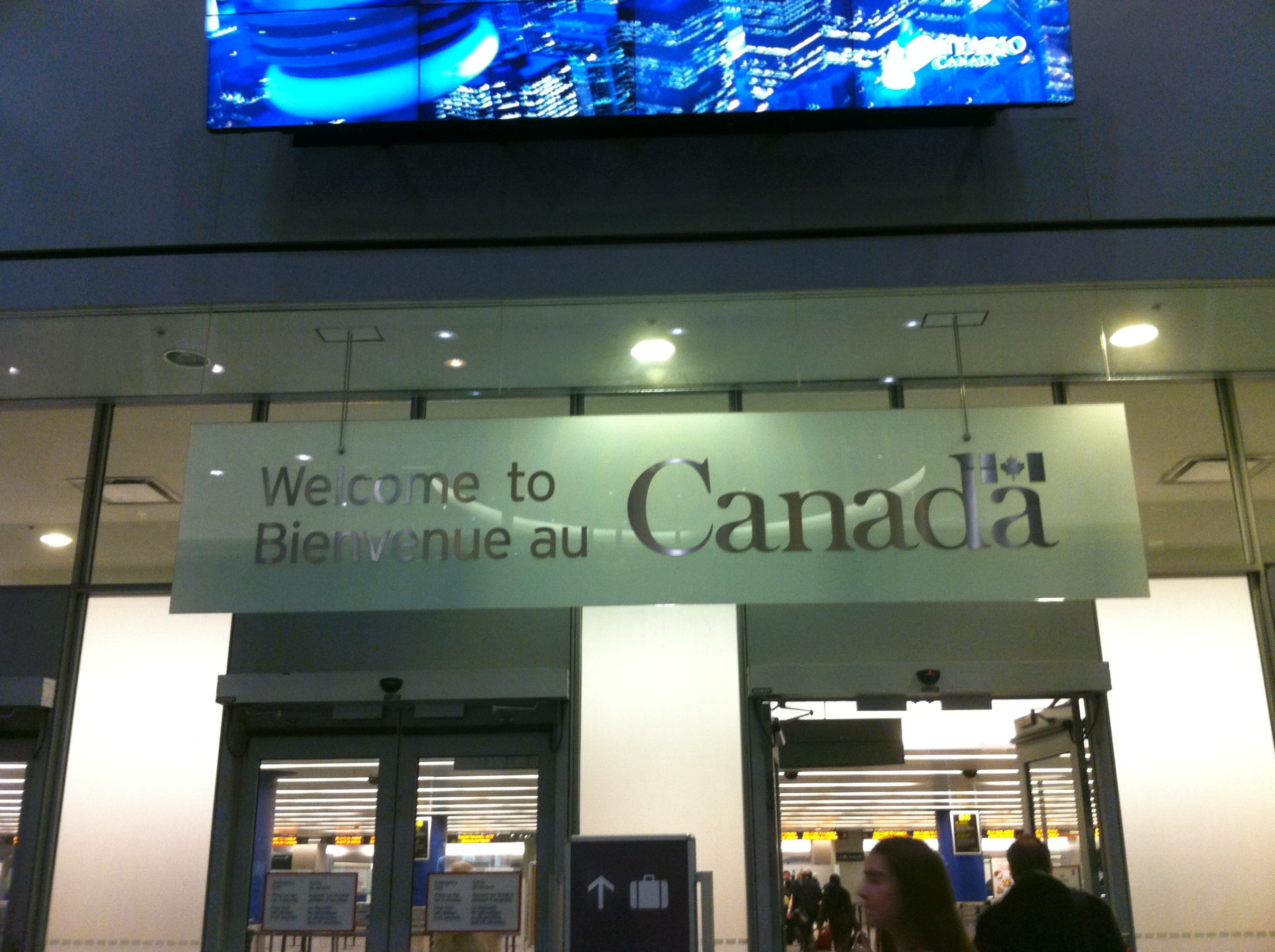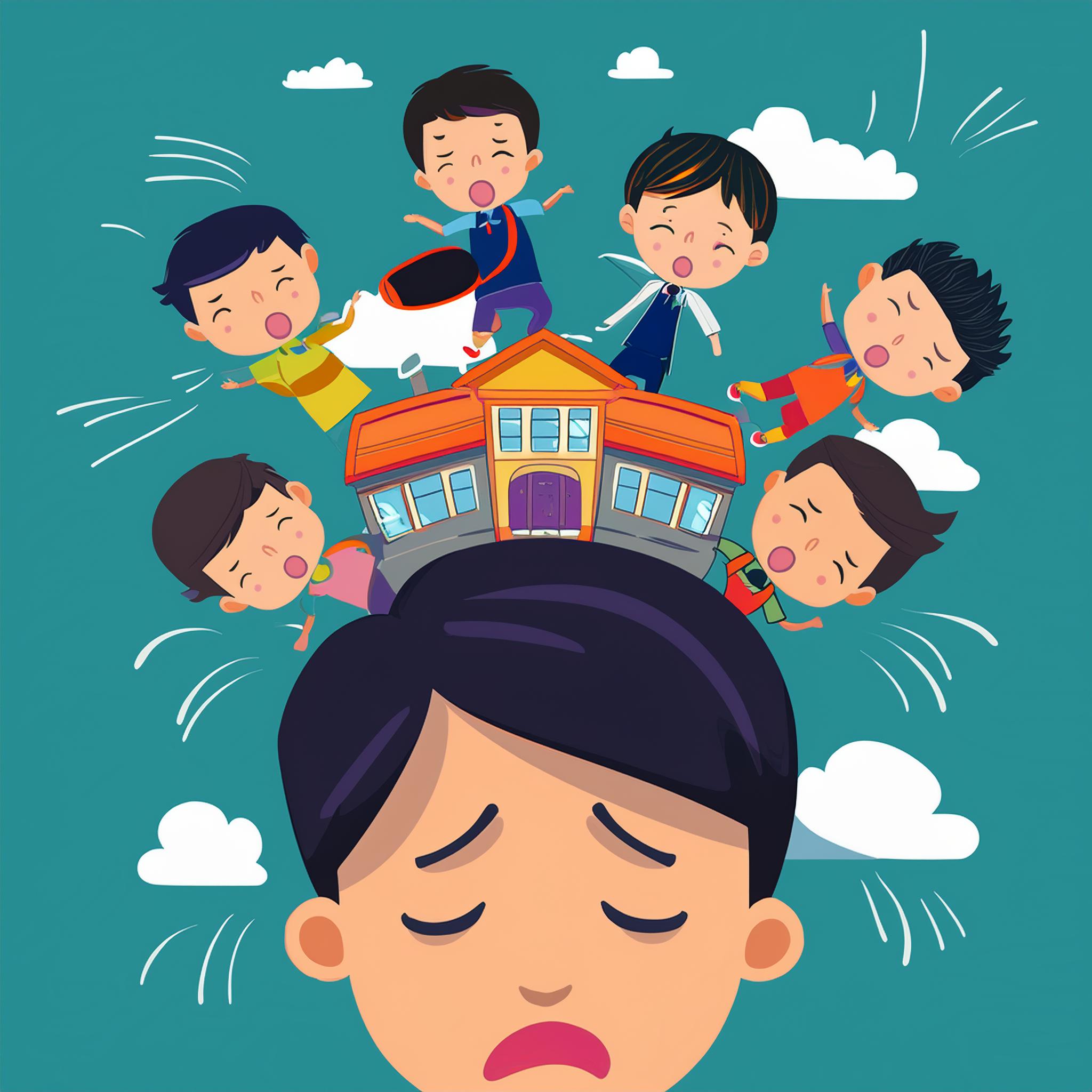Chapter 1: Welcome to Canada – Edgar’s Story
Before You Read
Look at the picture.

- When did you come to Canada?
- How did you feel on your first day? Why?
- Guess: What is this story about?
Read
Edgar always dreamed of coming to Canada. He did a lot of research. He learned a lot of data about the land and people. He also heard that Canada was big, clean, and safe. He wanted to give his children a bright future, so one day, he said good-bye to his friends and neighbours, and he moved to Canada with his wife and three children. When they got to Toronto Pearson airport, it was night. A friend picked them up. The trip through the city was beautiful! There were so many lights! Edgar knew that he was in a very good country, and he was very happy!
The first weeks in Canada were wonderful! Edgar and his family saw the CN Tower and visited museums and parks. Edgar’s friends showed him creative artwork around town. Everyone was very polite, and life was very good.
After the first month, Edgar and his family started to see some things that did not match his wonderful dreams of living in Canada. They had trouble understanding Canadians, and Canadians had trouble understanding them. It was difficult to do the necessary paperwork. Getting a driver’s license, affordable housing, and schooling for their children was hard. Edgar asked his wife, “Did I make the right decision in coming to Canada?”

When winter came, Edgar thought, “I made a mistake! Canada is very cold in the winter!” He did not know how to get around town in the snow. His wife fell on the ice and hurt her leg. Now he had a new problem to solve! He must look for a family doctor and learn about health insurance. This was not a part of his dream. The children enjoyed playing in the snow. As a result, they caught colds and coughed all night. Edgar became homesick, then depressed, and he really wanted to return home, but he was too embarrassed to admit failure to his family and friends.
Over the next six months, Edgar started to look for help in Canada. He found useful resources and community services in his neighbourhood. He got help to find a job at a small company. His wife, Mira, took care of the home. The children soon learned the new language and customs in Canada, and they found friends from different cultural backgrounds in their school.
As months turned into years, the family slowly adapted to their new life. They also developed a comfortable routine. They learned to appreciate the beauty of the changing seasons, the joy of cheering for hockey teams, and the taste of maple syrup on pancakes.

Edgar learned that the result of persistence and hard work is success if you don’t give up. Now, for Edgar, Canada is not just a place to live, but a place to call home.
Vocabulary
Company
Creative
Data
Decision
Match
Research
Result
Routine
Solve
Team
After You Read
- List 3 good things about Canada. List 3 things that Canada should change.
- How do you feel about living in Canada today?
- What advice do you have for newcomers to Canada?
Media Attributions
- Welcome to Canada Sign, Toronto Pearson Int’l Airport by Cohen.Canada is licensed under CC BY 2.0.
- CN Tower and Union Station by Doug Letterman is licensed under CC BY 2.0.
- Royal Ontario Museum by Daniel MacDonald is licensed under CC BY 2.0.
- Toronto: High Park by The City of Toronto is licensed under CC BY 2.0.
- Highway 404 & Highway 401 by Open Grid Scheduler / Grid Engine is licensed under CC0 1.0 Universal.
- Looking south down Yonge Street Toronto 2010 by dbking is licensed under CC BY 2.0.
- “A car, house, school, and coughing children falling on top of a sad man, vector” prompt, Adobe Firefly, 29 Aug. 2024, was artificially generated using Adobe Firefly and is, therefore, shared under CC0 1.0.
- Pre-season Hockey Game between Detroit Red Wings and Toronto Maple Leafs by George Norkus is licensed under CC BY 2.0.
References
Adobe. (2024). Adobe Firefly [Image generator].
Arizona State University. (2024). EdPlus Voiceover Generator [Voiceover audio generator].
Immigration, Refugees and Citizenship Canada. (2023, January 3). Canada welcomes historic number of immigrants in 2022 [Press release].
Microsoft. (2023). Copilot [Large language model].
Artificial Intelligence Disclosure
- Microsoft Copilot was used as a brainstorming tool for this chapter.
- Adobe Firefly was used to generate images, where indicated.
- The Arizona State University EdPlus Voiceover Generator was used to create the audio recording of the reading. Adaptations include modification of speed and/or timing, and comping of output takes.
Research - view the definition in the Collins Dictionary [New Tab]
Data - view the definition in the Collins Dictionary [New Tab]
Creative - view the definition in the Collins Dictionary [New Tab]
Match - view the definition in the Collins Dictionary [New Tab]
Decision - view the definition in the Collins Dictionary [New Tab]
Solve - view the definition in the Collins Dictionary [New Tab]
Result - view the definition in the Collins Dictionary [New Tab]
Company - view the definition in the Collins Dictionary [New Tab]
Routine - view the definition in the Collins Dictionary [New Tab]
Team - view the definition in the Collins Dictionary [New Tab]

